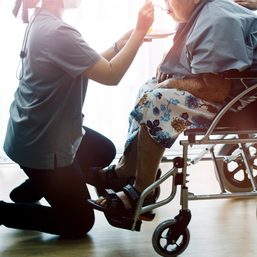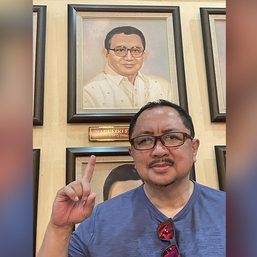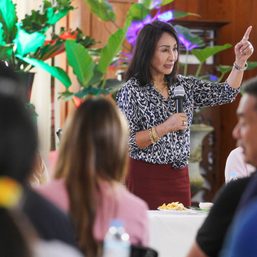SUMMARY
This is AI generated summarization, which may have errors. For context, always refer to the full article.

With the first doses of a COVID-19 vaccine only days away from arriving in the Philippines, medical experts appealed to the public to “respect” the government’s prioritization list and avoid jumping the line for limited shots.
The Healthcare Professionals Alliance Against COVID-19 (HPAAC) – the largest coalition of health groups in the country – said the prioritization listed by the National Immunization Technical Advisory Group (NITAG) would allow the country to reach its goals of reducing deaths and protecting its health system, but that this would only work if those most in need of a vaccine are able to receive it first.
“If we don’t take care of those in need of vaccines the most, we will suffer. We will not reach our objective. Many will continue to die, our health system will be overwhelmed again, this pandemic can go on longer, and we will continue to suffer the economic consequences,” HPAAC Convenor Dr Antonio Dans said in a virtual forum on Monday, February 8.
HPAAC had issue the call after expressing concern over reports vaccines were being offered to groups and individuals for purchase and earlier access.
The group said while the support of private companies was key to the government’s vaccine program, allocation should remain just and prioritized to protect those who were most vulnerable to the disease.
“Hindi naman natin sinasabi na hindi sila babakunahan. Ang sinasabi hindi lang ngayon kasi uunti ang supply (We’re not saying they won’t get vaccinated. We’re just saying they will need to wait for now because there is limited supply),” said Dr Anna Ong-Lim, a pediatric infectious disease expert from the University of the Philippines College of Medicine.
HPAAC counts among its member groups medical societies that earlier warned that the Philippines needed to recalibrate its response to the pandemic or see the country’s health system overwhelmed. It counts some of the country’s top medical experts and doctors as members.
Who’s in the priority list?
A list formed by the NITAG covers groups in the following order:
- A1: Frontline workers in health facilities both national and local, private and public, health professionals and non-professionals like students, nursing aides, janitors, barangay health workers, etc.
- A2: Senior citizens aged 60 years old and above
- A3: Persons with comorbidities not otherwise included in the preceding categories
- A4: Frontline personnel in essential sectors including uniformed personnel and those in working sectors identified by the IATF as essential during ECQ
- A5: Indigent population not otherwise included in the preceding categories
- B1: Teachers, social workers
- B2: Other government workers
- B3: Other essential workers
- B4: Socio-demographic groups at significantly higher risk other than senior citizens and indigent people
- B5: Overseas Filipino Workers
- B6: Other remaining workforce
- C: Rest of the Filipino population not otherwise included in the above groups
HPAAC said it backed this list adopted by the government’s coronavirus task force since it followed the World Health Organization’s advice that aimed to reduce deaths and protect health workers caring for COVID-19 patients and other illnesses.
WHO Philippines Representative Rabindra Abeyasinghe earlier said the health body prioritized both health workers and vulnerable populations at this point in time since global supply of vaccines was still limited. Data as of early February showed that of the 128 million people vaccinated worldwide, 75% came from just 10 countries, while nearly 130 countries had not been given a single vaccine.
Abeyasinghe said that while every person needed a vaccine, “in all fairness, we need to protect the health workers and those who are most at risk of dying.”
Private sector
Unlike most countries, the Philippines faces a particular challenge in implementing its priority list as it is among the few states that have allowed for tripartite deals involving the private sector and local government units to purchase vaccines.
For the private sector, tripartite deals allow groups that chipped in to purchase vaccine doses access to 50% of the supply bought with the national government. While guaranteed access, HPAAC said it hoped government would still prioritize vulnerable groups in most need of a vaccine.
“There’s pressure to have them receive it at an earlier point and it’s okay to negotiate, but in the end, I think we should honor the prioritization scheme that is based on science that is proposed by our officials,” Dans said.
“If the government, NITAG says we will prioritize health workers, senior citizens, and people with co-morbidities, it should be these groups first and then they (private sector) will be given their share to distribute after that. That is consistent with the tripartite agreement,” he added.
Ong-Lim continued: “More granular guidance will be needed at some point, but as a general rule, everybody should follow the allocation for prioritization because we have an objective to achieve – most efficient protection for the entire community and in the end, it will also benefit the entire community.” – Rappler.com
Add a comment
How does this make you feel?





There are no comments yet. Add your comment to start the conversation.